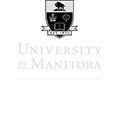
PRESENTERS
FABRICATING TRUTH
PALLAVI SWARANJALI, Carleton University
Forging Architecture: The Contronymic Nature of Architectural Creation in the work of
STEVEN BEITES, Laurentian University
KATIE GRAHAM, Carleton University
Architectural Storytelling in Virtual Reality: How VR Can Expand on Architectural Perception
TED LANDRUM, University of Manitoba
Poetry as Research: Fabricating Architectural Truth
FABRICATING IN SITU
SCOTT GERALD SHALL, Lawrence Technological University
Borrowed Intelligence: Leveraging Industrial Fabrication To Evolve Building Production
NAHID AHMADI, Carleton University
Asphalt Deserts: Rethinking the Architecture of Surface Parking Lots
DIETMAR STRAUB, University of Manitoba
A Beautiful Waste of Time: Operating a Snow Academy
JENNIFER SMITH, Auburn University
INCREMENTAL: Resilience through Disaster-Relief Housing
BRYAN HE, University of Manitoba
Making of the Hakka Vernacular
SOCIAL FABRICS
VALENTINA DAVILA, McGill University
Down the Back Stairs: Servants’ Spaces in Montreal’s Square Mile
LAWRENCE BIRD, Winnipeg
ELLEN GRIMES, School of the Art Institute of Chicago
History's Future Fabrics: New Models for Historic Ecologies
NIKOLE BOUCHARD, University of Wisconsin
RYAN STEC, Carleton University
Making Public Space: Examining Walter Lippmann & John Dewey’s pragmatism as a
constructive expansion to the spatial theory of public space
MEDIATING FABRICS
LANCELOT COAR, University of Manitoba
Lignes d’erre: Tracing the History and Future of Force Flow in Structures
Things themselves are lying and so are their images – Robert Le Ricolais
The search for meaning in architectural form can be traced back as far as humans have endeavoured to shape material. And while there have been innumerable
efforts to elicit connections between building form and the conceptual ideals of our cultures, there has also been a parallel pursuit for a closer link between the
shape of structures and the invisible forces that move through them. These forces, though unseen, are largely responsible for a building’s structural performance,
material efficiency, and the construction methods required to realize them.
Our understanding of these hidden energy fields has, like our cultural impulses in design, evolved throughout time, and yet remained a constant link to our primal
bond with the material world and the mysterious laws that govern its behaviour and performance in our structures. As design traditions and construction methods
have advanced, so too have the ways in which our designs relate to these forces both aesthetically and structurally.
This talk will centre on both historical examples and emerging trajectories of projects that have connected material behaviour, design intent, and invisible force flow
to achieve highly efficient and often surprising results. Originating from some of the methodological revelations of Robert Hooke, to the physical computations
offered by the modeling techniques of Frei Otto and Heinz Isler, the presentation will follow a thread of physical and computational research endeavours that have
used modeling not as a mode of representation, but rather as a dynamic tool to map force-flow in structures and to predict the sequential efficiencies of full-scale
construction. Distinct from industrial modern traditions of forcibly shaping material through bruit force to submit to “ideal” shapes, this approach has offered a
consistent counterpoint to ideological trends that have often resulted in inefficient design and construction methods speaking principally to conceptual momenta.
To illustrate some of the opportunities of this approach, research by the author will be presented in which recently discovered techniques in the mapping of forces
has helped lead to new methods of constructing flexible framed structures that utilize material behaviour, gravity, and structural form, to create highly efficient
fabric formed ice shells.
FEDERICO GARCIA LAMMERS & JESSICA GARCIA FRITZ, South Dakota State University
Master Building Complex Forms in the Absence of Graphics
JOE KALTURNYK, Winnipeg
The Temporary and the Intermediate: Strategies for a Better Dinner
photo: Landon Lucyk [M2 Architecture]

The 2018 Atmosphere Symposium is co-chaired by: Lisa Landrum and Liane Veness with the support of the Faculty's Cultural Events Committee and the Centre for Architectural Structure and Technology (C.A.S.T.); web design and graphics support by Tali Budman (ED4 Architecture student), and administrative support from Brandy O’Reilly (Faculty of Architecture, Partners Program).
Questions? Please contact info@atmos.ca